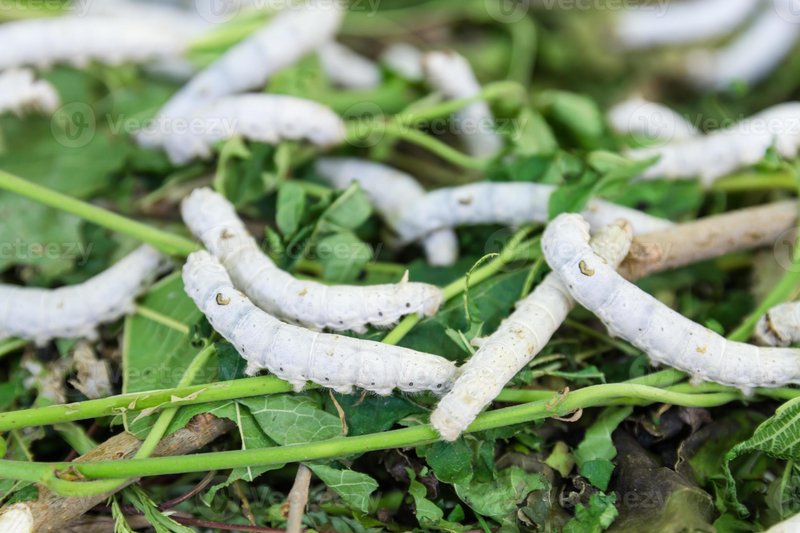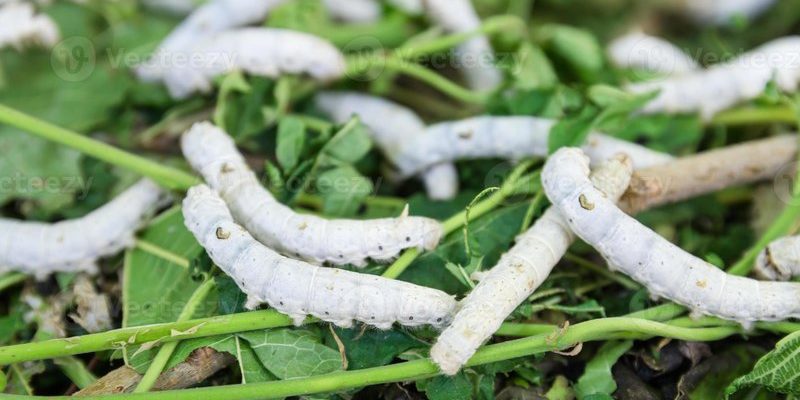
In a nutshell, silkworms are the larvae of the domestic silk moth, *Bombyx mori*. They were first domesticated over 5,000 years ago in China and have since become essential in the textile industry. Whether you’re thinking about the silk industry or just curious about how these fascinating creatures fit into our ecosystem, let’s dive deeper into the world of silkworms and discover what makes them so unique.
The Life Cycle of Silkworms
Understanding silkworms begins with their life cycle, which consists of several distinct stages. They undergo a process called *complete metamorphosis*, which means they start as eggs, hatch into larvae (the silkworms), transform into pupae, and finally emerge as adult moths.
– **Egg Stage:** It all starts with tiny, almost speck-like eggs that are laid by female moths. On average, one female can lay around 300 to 500 eggs. These eggs are usually kept in a warm and humid environment, ideal conditions for hatching.
– **Larval Stage:** After about 10 days, the eggs hatch, and the tiny silkworms emerge. They start munching on mulberry leaves almost immediately, growing rapidly. This stage lasts around 4 to 6 weeks. In fact, they can increase their body size over 1,000 times during this period!
– **Pupal Stage:** Once they’re ready, the silkworms stop eating and begin to spin their silk cocoons. This spinning process can take about 2 to 3 days. Inside the cocoon, they undergo transformation into moths, sealed away in their silky chambers.
– **Adult Moth Stage:** Finally, after about 10 to 14 days, the adult moths emerge from the cocoons, ready to start the cycle all over again. Unfortunately, these moths can’t fly and have a short lifespan, typically only about 1 to 2 weeks.
This life cycle is a fascinating glimpse into how silkworms transition from tiny eggs to incredible silk-producing machines!
The Process of Silk Production
You might be curious about how those delicate threads turn into the luxurious silk fabric we love. The process of silk production, known as *sericulture*, involves several steps. Here’s a simplified breakdown:
1. **Feeding:** After hatching, silkworms continuously eat mulberry leaves. Their diet is crucial, as healthy silkworms produce better-quality silk.
2. **Cocoon Spinning:** When the silkworms have reached maturity, they begin spinning their cocoons. They produce a sticky fluid from specialized glands that hardens into silk. This is done in a continuous thread that can be over a mile long!
3. **Harvesting:** Once the cocoons are spun, they are collected. To prevent the moths from emerging and breaking the silk, the cocoons are typically boiled or steamed.
4. **Reeling and Weaving:** After harvesting, the silk filaments are carefully unraveled, or “reeled,” and then twisted together to form silk threads. These threads are then woven into fabrics.
Honestly, the entire process is quite impressive. From the silkworms’ hard work to the final silk fabric, it’s a testament to the beauty of nature’s craftsmanship.
The Importance of Silkworms in Culture
Silkworms have played a significant role in various cultures, particularly in Asia. They are often seen not just as insects but as symbols of prosperity and luxury.
– **Chinese Heritage:** In ancient China, the secret of silk production was so valuable that it was kept secret for centuries. The Chinese valued silk not just for its beauty but also for its durability. Silk was used for everything, from clothing to royal banners.
– **Economic Impact:** Silk became a valuable commodity, influencing trade routes, especially the famous Silk Road, which connected the East and West. This trade helped cultures exchange not only goods but also ideas.
– **Modern Relevance:** Today, silk continues to be a luxury item. It’s sought after for high-end fashion, home decor, and even scientific research, particularly in medicine and biotechnology.
Let me explain—silkworms aren’t just a part of history; they’re woven into the fabric of human culture and commerce!
Silkworms and the Environment
Silkworms hold an important place in our ecosystems too. Unlike synthetic fibers, silk production from silkworms has a relatively low environmental impact.
– **Biodegradable:** Silk is a natural fiber, which means it’s biodegradable. When silk products reach the end of their life cycle, they decompose without harming the environment.
– **Sustainable Farming:** Sericulture can be more sustainable than cotton farming, which requires a significant amount of water and fertilizers. Silkworms, especially when raised on mulberry leaves, can thrive on less water.
– **Support for Biodiversity:** The cultivation of silkworms encourages the growth of mulberry trees, which provide habitats for various species. These trees play a significant role in maintaining biodiversity.
You might be wondering how such small creatures can make such a big difference. Well, it’s their role in sustainable practices that makes them crucial to our planet’s health.
Challenges Facing Silkworm Farming
While silkworm farming has its benefits, it also faces several challenges. Here are a few that farmers and producers encounter:
– **Diseases:** Silkworms can be susceptible to diseases and pests, which can wipe out entire crops. Farmers must maintain strict hygiene and monitor their silkworms to minimize these risks.
– **Market Competition:** With the rise of synthetic fabrics, traditional silk faces competition. Many consumers opt for cheaper alternatives, which can impact the demand for natural silk.
– **Climate Change:** Changes in climate can affect the growth of mulberry trees and the health of silkworms. Farmers must adapt to these changes to ensure their crops thrive.
By understanding these challenges, we can appreciate the hard work that goes into producing silk and the importance of supporting sustainable practices in silk farming.
How to Care for Silkworms at Home
If you’re inspired to raise silkworms yourself, whether for educational purposes or just as a hobby, here’s a simple guide to get you started:
1. **Setting Up a Habitat:** You’ll need a suitable container with proper airflow. A simple cardboard box works well, and make sure to line the bottom with clean paper or cloth.
2. **Feeding:** Use fresh mulberry leaves as the primary food source. You can also use other leaves, like osage orange, but mulberry is preferred. Keep the leaves fresh daily!
3. **Temperature and Humidity:** Keep the habitat in a warm place, ideally between 70°F to 80°F (21°C to 27°C). Maintaining humidity is essential; you can lightly mist the container, but don’t soak it.
4. **Monitor Growth:** Watch your silkworms as they grow! They’ll shed their skin several times before spinning their cocoons. This is a normal part of their development.
Caring for silkworms is a rewarding experience, allowing you to observe their fascinating life cycle up close.
Silkworms are more than just the source of luxurious silk; they’re a bridge between nature and culture, science and art. From their intriguing life cycle to their cultural significance and environmental impact, there’s so much to learn and appreciate about these remarkable creatures. Whether you’re wearing silk or considering raising silkworms at home, you now have a deeper understanding of what these little insects bring to our world.
So, the next time you drape a silk scarf around your neck or admire a silk tapestry, remember the tiny silkworms that made it possible. They’re working behind the scenes, spinning their silk and weaving their stories into the fabric of our lives.

